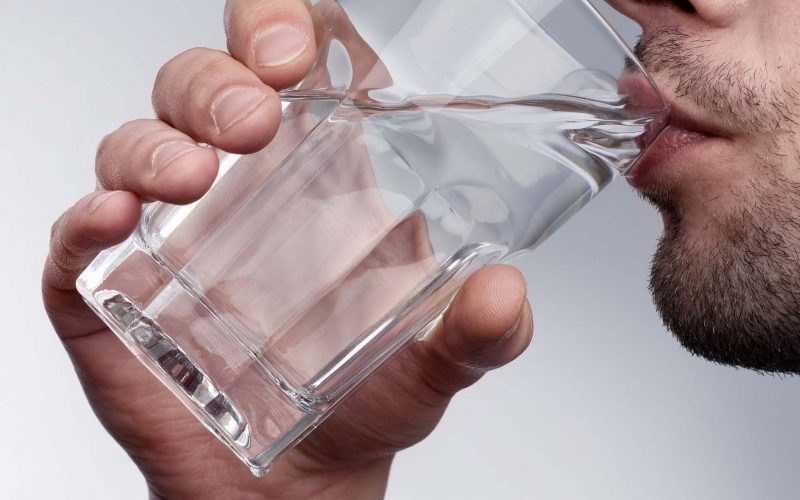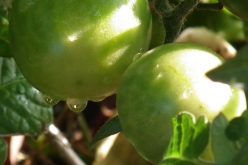By Luke Simons
Let’s step back to summer 2012.
And focus on the part that probably every one of us would like to forget and hope never happens again: our nation’s severe drought. Recall the size of A/C bills and wildfires out West, especially those in Colorado. In the month of June alone, the United States broke or tied 3,215 high-temperature records. And that was just June — the summer heat just continued to make itself more pronounced. We’ve seen some hot summers recently in Arkansas, but this past one was unusual, with dried up fields and pastures, failed crops and dead livestock. When it’s all said and done, the losses and impacts are likely to total in the billions. In a state endowed with good water resources, we could not escape the impacts of a severe drought.
When extremes like this occur there are innumerable concerns, both immediate and long-term. Often times, much of these concerns feel out of our control and too big to wrap our heads around. We may wonder, is my community or state prepared to handle a serious water shortage?
It is important to look at events of this past summer and the likelihood of them returning, albeit in a world where water will be only more precious. Our state has started down the path of reanalyzing water and its crucial place in each citizen’s life. It couldn’t have come a year sooner.
Water in Arkansas
Our state legislature has recently passed funding for a new state water plan. The Arkansas Natural Resources Commission (ANRC) has been pushing for such funding for the past several years. Our current plan dates back to 1990. In that amount of time, much has changed: from demographics to resource allocation to monitoring technology to ecological impacts and much else. Not only do we need to account for a significantly different era than that of 20-plus years ago, but we need to envision a better future for our state and its citizens.
Funding of $1 million of state (i.e. citizen) was approved to start on a plan that will, not only, be applicable now but projecting out to future needs as far as 2030. It will take shape over the next two years, and a working plan — i.e. one that doesn’t just lead to arguing — is to be delivered to state government in November 2014. The citizens of Arkansas have been invited to help steer the future of this plan.
The Next Two Years
Two water consulting firms (CDM Smith and FTN Associates) have been brought in to accumulate and process the data and, ultimately, in the delivering of decisions that will form the basis of a new plan. They will be working with state branches of the U.S. Army Corp of Engineers, U.S. Geological Survey and the ANRC. I should point out that the ANRC is divided into three divisions: Conservation, water development and water management. It is the water management division that will ultimately be “responsible for the development, updates to, and implementation of the Arkansas Water Plan (Arkansas Water Plan).” (1)
Over the next two years, public meetings are set to be held throughout Arkansas at strategic points along the roadmap towards completion. These are forums for the community to find out about progress and ask questions. The first such meeting was an official kickoff which happened Tuesday night Nov. 13, on the University campus here in Fayetteville. Since then, three additional kickoffs have either occurred or are about to occur in Jonesboro, Little Rock and El Dorado.
Fayetteville’s kickoff brought together a crowd approaching 80-100 citizens making up a well-represented cross-section pulling from many sectors including wastewater, navigation, environment and recreational. One of the consultants presided over what proved to be a very informative hour-and-a-half meeting. The need for a new plan was underscored in light of changes in water use and values, as well as new collection and analysis tools. Agricultural and municipal water needs have seen significant increases in demand. According to a chart provided, irrigation alone accounts for over 4,500 million gallons per day – more than double the next highest water usage sector (Thermoelectric).
The two-year roadmap is ambitious, to say the least. A high-level, two page draft of the vision and goals was provided at the kick-off and it is filled with needs to optimize all water, utilize the best technology and science and identify opportunities for improvement. From waste water to living ecosystem – seemingly everything is identified for analysis. The major milestones will be completion of demand forecasting (Spring 2013), completion of supply forecasting (Fall 2013), and development of solutions (Early spring 2014). It is at the end of each of these milestones that public meetings will occur around the state.
Water Issues
So what are some of the issues? At the kickoff meeting there were plenty of questions from attendees and many questions focused around the quantity and quality of our area water. There was certainly an environmental and geologic appreciation apparent for natural water sources not adhering to state boundaries. Rivers move between states, and aquifers subsist below certain regions.
Concerns included: the Fayetteville Shale (Arkoma Basin) and water contamination from hydraulic fracturing. Also, aquifer depletion, in particular along the Delta where significant amounts of this water are used for irrigation. There were other questions around the continued growth in Southeast Missouri and potential need to expand their access to the Beaver watershed. Also, how dependable of a water source will the Arkansas River (which crosses our state from the west into the Mississippi River) be five years from now? Questions like this point to compacts that exist between states — these too will only become (literally and figuratively) hotter topics in coming years.
Water concerns abound at all levels: Internationally — desertification, countries (and private parties) buying water rights in other countries; Nationally — water wars out west, natural gas drilling (i.e. hydraulic fracturing), PepsiCo, Coca Cola and Nestle (in particular) buying land over natural springs and ciphering out huge amounts of community water to put in plastic bottles; obsolete dams and their interference with ecosystems.
As communities and states feel more of a pinch on their water needs, expect them to start looking elsewhere. We in Arkansas might not be so far removed from the great water wars out west. Just consider the impact of recent droughts on neighboring states like Oklahoma and Texas and the battle for water from the Red River (which also impacts Arkansas), and Oklahoma significantly revising their state’s water plan. Ten years from now, even if we wanted to give water, it would be embarrassing to have to say “we’d love to but too much of ours is contaminated from hydraulic fracturing.”
Getting Involved
The official website for Arkansas Water Plan is ARWaterPlan.Arkansas.gov. They also have a profile on Facebook that includes links to several documents. Locations and times for future meetings will be located here, soonest being May/June 2013. At the kickoff the moderator encouragement feedback from citizens, and we all should take advantage of this and keep on top of progress.
Resources
1. ‘Building Strong Collaborative Relationships for a Sustainable Water Resources Future: State of Arkansas, Summary of State Water Planning’ PDF. The Army Corp of Engineers 2009














